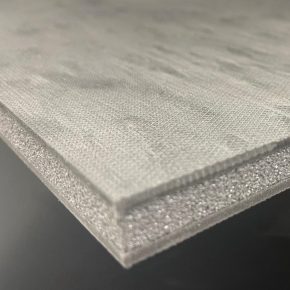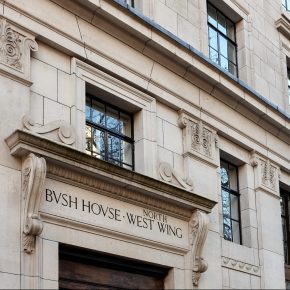
What is ghosting and what’s the best way to deal with it?: Saint-Gobain Weber
‘Ghosting’ is a phenomenon whereby the outline of the blockwork is visible through the render, as a result of penetrating dampness from the underlying masonry – Saint-Gobain Weber explore it more…
It quite often appears following rainfall at the start of the drying process, as the outline of the block shows the differing levels of absorbency of the masonry and its bedding mortar.
In order to prevent ghosting, careful consideration should be given to what thickness of render is used.
The location, orientation and surrounding environment of the building to be rendered, as well as exposure to wind and rain, along with potential protection from surrounding buildings all have an impact on the thickness required to protect the build.
For sheltered to moderate exposure, the minimum recommended thickness of render is 15mm, and this rises to 20mm in the case of severe exposure.
The visual impact of ghosting is worsened in new construction, if the building components have not dried out fully.
If this is the case, the effect should lessen over time – Saint-Gobain Weber recommend leaving the render for a couple of months, in the hope once the blocks are fully dry, and the render fully cured, ghosting will no longer be issue.
If after waiting, the problem persists, there are two options to remedy it…
-
Paint
A high-performance, water-resistant paint, such as webersil P, may be applied to the building to overcome the issue of ghosting. webersil P is a mineral paint with exceptional long-term durability and performance, and comes in a range of 160 colours. This paint is suitable for use with our weberpral renders, provided the elevation is clean, sound and dry.
-
Re-render
In some circumstances, it may be advisable that rather than painting, the thickness of the render should be increased.
Before re-rendering, the entire area to be rendered should be stripped of any paint or coating, and should be clean, dry and sound.
If necessary, a coat of weber CL150 can be used to ensure no algae is present on the surface. A keycoat of weberend aid should be applied, followed by a pass of weberpral M (or weberpral D in Ireland) render at 10mm which is scraped back to a thickness of 6mm.
As with any project, Saint-Gobain Weber will be with you every step of the way. If you’ve unexpectedly experienced ghosting, the company is happy to advise on how best to deal with the issue.
Saint-Gobain Weber
Dickens House, Enterprise Way
Maulden Road
Flitwick
Bedford
MK45 5BY
UK
Visit Saint-Gobain Weber's website
Visit Supplier's page
Latest news

29th April 2024
Hush: New Hushlay options offer acoustic upgrade potential
Leading UK acoustic systems manufacturer Hush Acoustics has introduced two additional variants of its Hushlay Soundmatting product.
Posted in Acoustics, Noise & Vibration Control, Articles, Building Industry News, Building Products & Structures, Building Services, Facility Management & Building Services, Floors, Innovations & New Products, Insulation, Restoration & Refurbishment, Retrofit & Renovation
29th April 2024
Digital Construction Week 2024 speaker programme announced
The programme at Digital Construction Week is carefully designed to help you keep up with the fast pace of innovation in the built environment.
Posted in Articles, Building Industry Events, Building Industry News, Building Products & Structures, Building Services, Exhibitions and Conferences, Innovations & New Products, news, Posts, Restoration & Refurbishment, Retrofit & Renovation, Seminars, Sustainability & Energy Efficiency
29th April 2024
Steel Window Association - for the specialists in domestic and commercial refurbishment of steel windows
The UK-wide Steel Window Association members are the established, proven experts in the renovation and sympathetic refurbishment of steel windows and doors in both domestic and commercial premises.
Posted in Architectural Ironmongery, Articles, Building Associations & Institutes, Building Industry News, Building Products & Structures, Building Systems, Doors, Glass, Glazing, Restoration & Refurbishment, Retrofit & Renovation, Steel and Structural Frames, Windows
29th April 2024
The Rooflight Association: Rooflights & Fire Regulations - what you need to know
The Rooflight Association has published a series of ‘Quickguides’, covering the fire rating requirements for use of rooflights in buildings for each of the four devolved UK nations.
Posted in Articles, Building Associations & Institutes, Building Industry News, Building Products & Structures, Building Regulations & Accreditations, Building Services, Ceilings, Health & Safety, Innovations & New Products, Lighting, Publications, Restoration & Refurbishment, Retrofit & Renovation, Roofs, Security and Fire Protection, Walls, Windows
 Sign up:
Sign up: